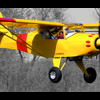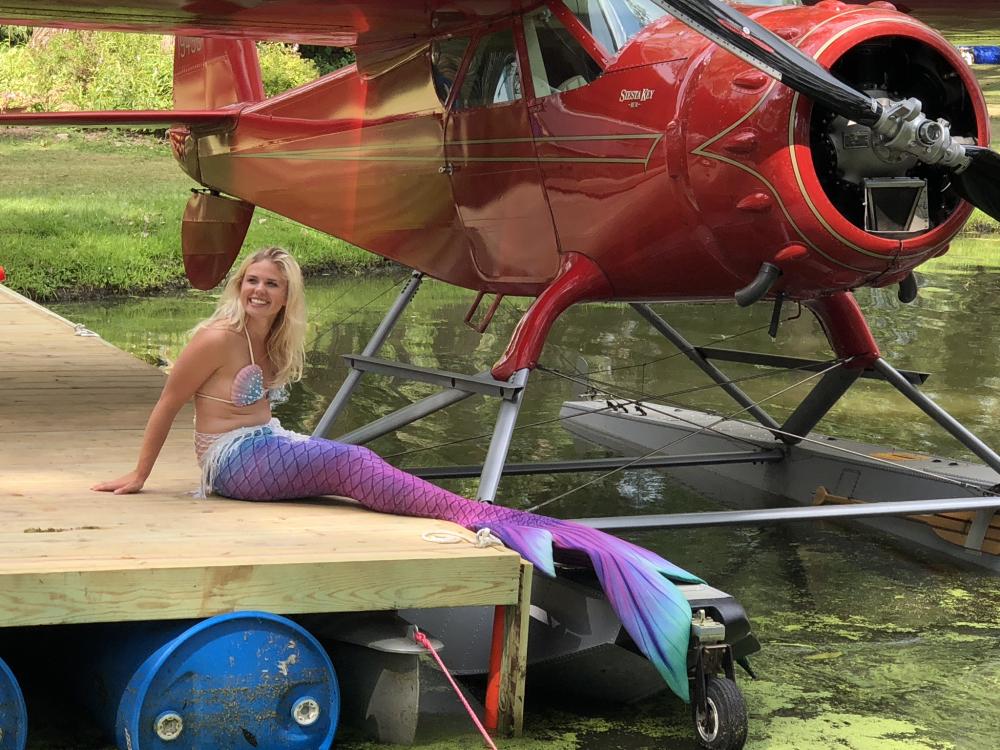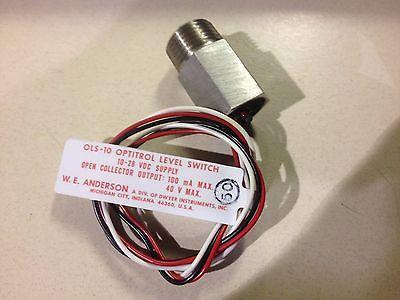-
Content count
308 -
Joined
-
Last visited
Posts posted by Av8r_Sed
-
-
I’m using a YAMAHA SHINDENGEN FH020AA regulator. It’s designed for three phase stators but works fine with our single phase types. It uses MOSFET technology and wastes less power in heat than the traditional types used with rotax engines. It maximizes the output from the 165 watt coil on a 582.
-
That regulator requires some load on it (1 amp minimum?) to regulate, besides the filter cap. Make sure to keep something on when the engine is running. Maybe lights of some sort. Radios or other avionics aren’t a good choice because they might not like voltage excursions when starting up or shutting down. Or, go ahead and upgrade to a better regulator. Lot’s of people like the Key West. I use a motorcycle regulator.
-
Check to see you’re getting 12-14 volts at the power supply and the wiring is good out to the stobes. I had mine go out and found an internal fuse in the power supply was blown. It’s a pain to open one of those up because they used rivets which have to be drilled out (OK, they’re aluminum so not too challenging). If you do open it, remember you’re dealing with high voltage.
At Oshkosh one year, I found Whelan was selling refurbed units they pulled from under the counter. Wouldn’t hurt to ask them if you still need one by then.
Or go LED.
-
I use Lincoln Benefit Life sold through the Pilot Insurance Center. PICLife.com
The premium was reasonable for 20 year level term.
1 person likes this -
I use Amsoil Interceptor. Try your Coastal Farm and Ranch.
-
I used a shop vac on the rear spar to suck a string tied to a cloth. Same idea as the compressor.
1 person likes this -
Pretty sure you can still buy them for a Kitfox IV from the factory, so I assume you'll looking for less expensive alternatives?
-
You’re going to have to do some fabric work. With the cut fabric, the integrity of the covering is compromised and it will not be airworthy unless you terminate / patch it properly even if you are adding additional access covers. This would be a great time to call in some help from a local tube and fabric expert to get you on the right track. The work you’ve already been doing is more advanced than fabric skills so you shouldn’t have any trouble picking it up.
Thanks for sharing your fabrication adventures.
1 person likes this -
Yes friend, you’re not alone. Strong gusty days make for a lotta work and can take all the fun out of flying these light wonders. Gotta pick your days.
1 person likes this -
The Red Baron looks sharp set off against that huge field. He looks lonely though. Needs a friend to join him on his sorties.
-
I note that the Garmin GDL-82 has provision for a switch to be wired so you can select anonymous mode operation when desired. If it is legal for one brand, then it should be legal for all.
-
Good for you Vance! You pushed through everything that popped up and now have a flying bird. Enjoy your flying now. Won’t be long before you’ll be mounting up some skis.
1 person likes this -
There’s a guy named Bill Larson in Willamina, OR who advertises on Barnstrormers.com. No personal experience.
https://www.barnstormers.com/listing.php?mode=usersearch&user=29323
-
-
That’s rough, Fred. So glad you weren’t hurt. I suspect you’ll have your bird repaired and flying again in no time.
1 person likes this -
Yup, prop sits still at idle unless you have a breeze and then it windmills. The two strokes apparently don’t need much of a flywheel because they idle really nice with no load. The clutch starts to engage around 2200 RPM. You’re supposed to avoid spending much time between that and 3000 RPM. I taxi at 3000.
-
I agree with everything Leni said about the clutch. I went to it because I’m running a fairly heavy IVO medium and there was no way to get a smooth idle without it. When the vibration got bad it upset the carb floats and ended up barfing gas out on the exhaust.
Approach with a freewheeling prop and a slow airspeed gets you in nice and short but requires a shot of power to arrest the considerable sink rate and avoid an embarrasing “arrival”.
The only other negative to the clutch is you can’t prop the engine, nor turn it over to bring a piston to TDC.
1 person likes this -
Genious! Nearly 40 years doing electronics, why haven’t I come across this before?
-
Not even April Fool's day yet but this is definitely a joke. Range of 100 km

Larry Page's newest blunder: https://cora.aero/
1 person likes this -
Well done, sir!
-
From the EAA website:
ANTI-COLLISION LIGHTS
Am I required to have anti-collision lights on my homebuilt?
No, if you are only going to using your aircraft for day, VFR flight. FAR 91.205 lists the instrument and equipment requirements for standard category aircraft. This FAR does not apply to Experimental-Amateur Built aircraft.
If you intend to use your aircraft for either night VFR or IFR flight, you will have to comply with the requirements of FAR 91.205 because the operating limitations you receive as a part of your airworthiness certificate will include the following language:
“After completion of phase I flight testing, unless appropriately equipped for night and/or instrument flight in accordance with § 91.205, this aircraft is to be operated under VFR, day only.”
From FAR 91.205:
(c)Visual flight rules (night). For VFR flight at night, the following instruments and equipment are required:
(1) Instruments and equipment specified in paragraph (b) of this section.
(2) Approved position lights.
(3) An approved aviation red or aviation white anticollision light system on all U.S.-registered civil aircraft. Anticollision light systems initially installed after August 11, 1971, on aircraft for which a type certificate was issued or applied for before August 11, 1971, must at least meet the anticollision light standards of part 23, 25, 27, or 29 of this chapter, as applicable, that were in effect on August 10, 1971, except that the color may be either aviation red or aviation white. In the event of failure of any light of the anticollision light system, operations with the aircraft may be continued to a stop where repairs or replacement can be made.
(4) If the aircraft is operated for hire, one electric landing light.
(5) An adequate source of electrical energy for all installed electrical and radio equipment.
(6) One spare set of fuses, or three spare fuses of each kind required, that are accessible to the pilot in flight.
-
Fred, Broadly generalized, that's true.
-
I’m not expert but I think you have to move faster. Amperage is probably about right.
-



Where's Doug?
in Avidfoxflyers General Hangar
Posted
Sending all my positive energy her way!